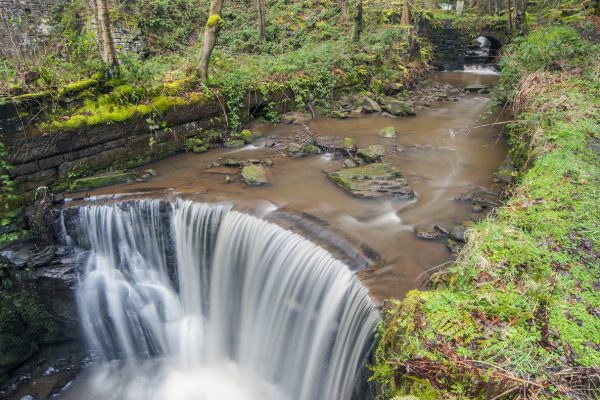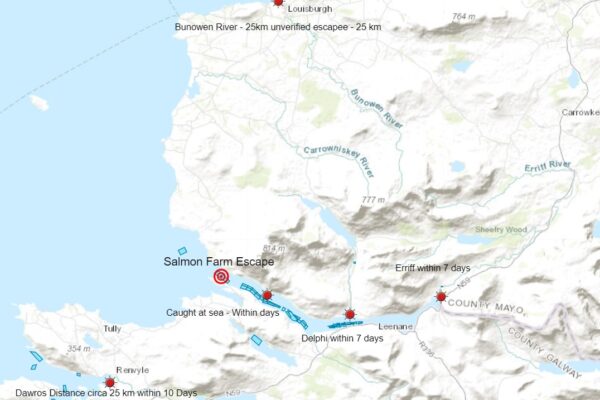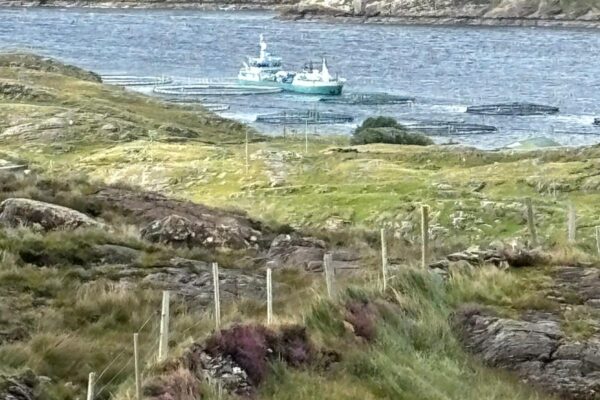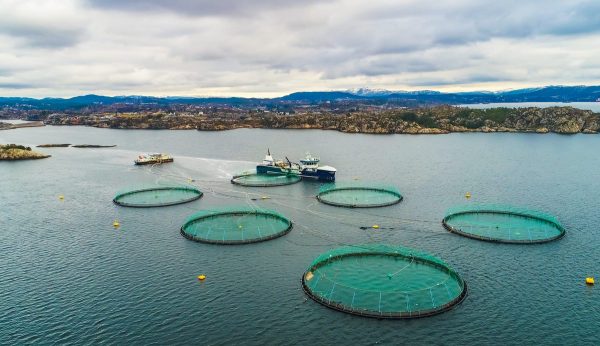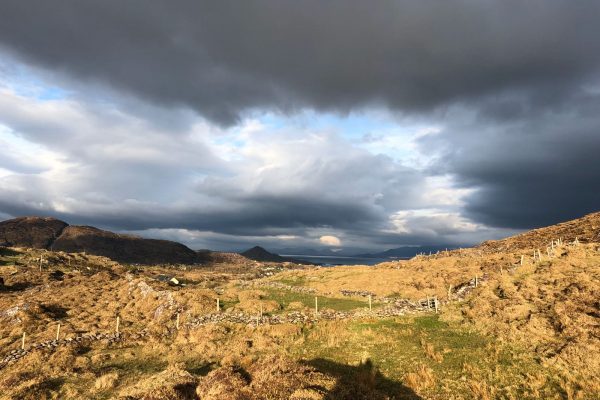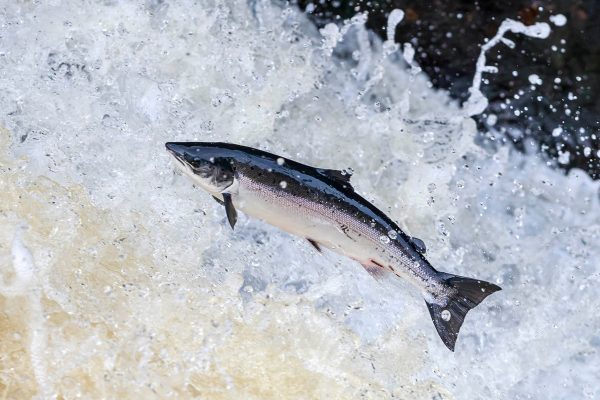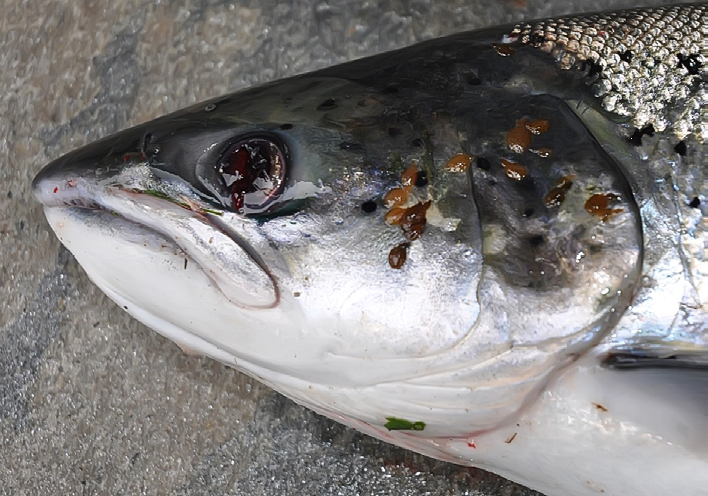-
Fish Kills – Ireland –
This is a most revealing report and should be studied to ascertain trends evident in data. It must also be stressed that diffuse sources from agriculture are probably the biggest threat to rivers and lakes which requires a change to macro policy concerning agriculture. Finance can go a long way to upgrading and replacing urban waste water infrastructure. The overuse of water in Ireland is alarming with all water from houses and industry being discharged to treatment plants. The older plants also receive storm water which has certainly increased with climate related issues. This study gathered and digitised data from 2107 fish kill events in Ireland, spanning more than 50 years from 1969 to 2022. Spatial data was available for 1738 fish kills. • The number of reported fish kill events has decreased since reporting began in 1969 especially when compared to the high levels of the 1980’s. • Four phases of fish kills occurred in Ireland since 1969. The worst years for reported fish kills were in the 1980s, particularly 1984, 1987 and 1980 respectively with a total of 347 fish kills recorded. Since 1992 there has been a downward trend in reported fish kills. The peak in fish kill reports in the 1980s coincided with an intensification of agriculture in Ireland. Despite the downward trend since about 2012,there have been several relatively high numbers recorded, mainly coinciding with the occurrence of heatwaves and droughts. • Fish kills were more prevalent during the summer months, when warm weather and low water levels exacerbated potential underlying problems within a channel. • Common causes included agriculture, eutrophication, industry and municipal activities. • Fish kill events were less frequent in the west and northwest and hotspots were particularly prevalent in the east, south and the north midlands probably coinciding with intensive agricultural activity and large urban centres. • Fish kills occurred in every county since 1969. Counties Cork and Cavan had the highest proportion of fish kills, while Co. Roscommon and Co. Westmeath had the lowest. • In the 1970’s the highest number of fish kills (where spatial data was available) was reported from Co. Tipperary and in the 1980s from Co. Cork. In the 1990s and 2000s, Co. Cavan had the highest, and in the 2010s it was Co. Cork. Since 2020, the highest number has been recorded in Co. Cavan, followed by Co. Cork. • Since 1969, the Erne Catchment (Hydrometric Area 36) had the highest number of reported fish kills. This was followed by the Lee, Cork Harbour and Youghal Bay (Hydrometric Area 19), the Barrow (Hydrometric Area 14), Suir (Hydrometric Area 16) and Liffey and Dublin Bay (Hydrometric Area 09) catchments. • Across IFI’s fishery regions, the Eastern River Basin District (ERBD) had the highest number of fish kill reports during the study period. Two river sub-basin waterbodies in the ERBD (Avoca_020 and Avoca_010) had the highest number of fish kill reports. The Erne_080 (NWRBD), Feale_090 (ShRBD), Barrow_140 (SERBD) and Cavan_010 (NWRBD) were also among the top six sub-basin waterbodies with the highest number of fish kill reports. • Rivers were the most impacted waterbody followed by lakes. Read Full Report:Full Report Read More
Continue reading -
Update -Escapee Salmon on the move and fast: Farmed Salmon Caught Owenmore River
Reports coming in of farmed salmon caught on Owenmore River which is over 70 km from Killary within seven days. Is this fish from Killary or has there been another escape? Escapee salmon from Rosroe salmon farm in Killary have migrated long distances over the last ten days. These fish which have compromised genetics and may in time breed with wild salmon should at all costs be removed by any means possible. These fish have been caught both in the sea by anglers fishing for mackerel but more alarmingly have entered rivers both within Killary Harbour and further afield. Some have traveled over 25km north to the Bunowen and south as far as the Dawros system. These fish are being caught in these systems by anglers and should immediately be killed and reported to Inland Fisheries Ireland. The operator of the farm has suggested that these fish may not mature until 2025 but little is known of how they develop when released into the wild and thus may pose a risk this spawning season. There are many small rivers with unique genetic salmon populations and these are at high risk of damage by escapees through interbreeding. Disease may also pose a risk to all wild salmonids both near and far. There is every risk that the escapee salmon will continue to migrate and pose a risk to populations along the western sea board. There are a number of rivers within the area which are part of conservation areas which have wild Atlantic salmon as a qualifying interest and this highlights the unacceptable risk posed by open cage farming. There is no safe way to protect wild salmon if these farms are not moved onto land.
Continue reading -
Salmon Escape Killary Update
Salmon Watch Ireland have requested the Marine Institute, and copied the Food Safety Authority and BIM, to speedily make a statement on the safety of farmed salmon escapees in Killary and wider area. We have received information that these fish are being caught both in salt water and in freshwater catchments flowing into Killary and some are being consumed. It is our strong opinion that these fish should under no circumstances be eaten as they may be harbouring significant residues of anti-biotics, vaccine residues and indeed anti parasitic medicines. Text of email " Salmon Watch Ireland requires that the Marine Institute issue a statement regarding the escape in Killary Harbour on 11th August particularly in regard to the health status of the farmed salmon which escaped into the wild. We are particularly interested to ascertain if these fish pose a risk to human health as anecdotal reports indicate that a significant number of these fish are being caught and some consumed. We will also be copying this email to the Health Service Authority, BIM and the Food Safety Authority. We also wish to ascertain if any disease was present on the farm which could affect wild salmonids. It is common practice to starve fish prior to harvest to reduce any medication present but these fish were actively feeding and thus may prove to be harbouring high levels of antibiotic residue and anti parasitic medicine. We could always go through the FOI process but this information should be in the public domain as soon as possible. It is also evident that the condition of these fish have all the hallmarks of poor fish welfare and sea lice damage is evident on fins. Some selected photos demonstrate the overall poor condition of these fish which should trigger
Continue reading -
Salmon Farm Escape – Killary Harbour , County Galway
Salmon Watch Ireland has been alerted this morning to a large escape of farmed salmon from Rosroe salmon farm in Killary Harbour which occurred on Sunday, 11th August. The escape appears to have been caused by a fish farm boat colliding with salmon cages which resulted in an escape of farmed salmon numbering over ten thousand fish. It must be stressed that this figure may be an underestimate as it is likely that accurate reporting of such escapes are at best, estimated. The farmed salmon are 1.5 kg to 2kg in weight and reports indicate that large numbers can be seen throughout Killary Harbour. The farm licence is listed as owned by Docon Limited, Mulranny Co. Mayo with a recent transfer from previous owners in October 2023. Local information suggests that MOWI have a substantial interest in this farm. Salmon Watch Ireland would like to ascertain if all operating procedures were put in place to safeguard the cages prior to this incident and if all necessary reporting steps were taken once the escape was discovered. We would also like to know if steps are to be taken to trap the escapees and prevent them from entering the nearby wild salmon catchments. In the recent decision by Judge Holland in relation to the Bantry Bay Judicial Review, he noted that the EIA was not comprehensive enough as it related to specification and structural integrity of the cage infrastructure. This incident once again highlights the dangers and risk of damage to farms and highlights the very real risk to wild salmon genetics. These fish may in time enter rivers and interbreed with the wild salmon both in Killary harbour catchments and indeed further afield. We regard the removal of open cage technologies as a priority to protect wild salmon and are calling on DAFM to reconsider siting these farms at sea. In the interim it is of the utmost importance that the maximum number of escapees are captured to reduce risks to local wild salmon populations. We encourage anglers to report and remove farmed salmon if caught and we strongly suggest that Inland Fisheries Ireland and the Marine Institute should facilitate a program of removal by all available means.
Continue reading -
Fish Counter Report 2023- Significant decline noted in grilse and late summer salmon
There would appear to be a significant downturn in 1SW salmon in 2023. This is very much in line with angling and commercial catches in 2023 and is in line with majority of countries in NE Atlantic which saw a substantial decline across all regions. The indicators would suggest that this year has seen a significant upturn on last years grilse run but spring salmon in 2024 is suggestive of poor survival of the same smolt cohort which supplied last years grilse. As this downturn is widespread it suggests a large downturn of conditions at sea. The report can be read here: IFI Fish Counter 2023
Continue reading -
Deenish Island – Six years and counting
The MOWI (Deenish Island) owned salmon farm located within nine kilometres of the once famous Waterville sea trout fishery has once again escaped judgement by the Aquaculture Appeals Board. This farm was officially ordered to close in April 2019 but has since operated unchallenged while pursuing an appeal against the closure. The sea trout fishery is effectively abandoned with a substantial loss of economic activity and the loss of many jobs associated with angling tourism. The text of the letter is as follows: "I refer to my letter of 05 September 2023 in which the Board indicated it anticipated this Appeal would be determined by 30 September 2024. The Aquaculture Licences Appeals Board (ALAB) reviewed this timescale for the determination of this Appeal at its meeting on 25 July 2024 and has formed the view it will not be in a position to determine these Appeals within that timeframe due to the ongoing collation of technical advice and the vacant position of an internal ALAB Technical Advisor. In light of this, as provided for in Section 56(3) of the Act, the Board hereby gives notice of its intention to determine this Appeal by 31 January 2025." The ongoing damage to Waterville and its angling reputation is continuing while sea trout stocks continue a rapid and accelerating decline. While Salmon Watch Ireland has successfully taken judicial review proceedings in regard to Bantry Bay we are conscious that the Deenish situation should be prioritised by all concerned with bringing back stability to sea trout stocks with economic benefits accruing to the local community. We are disappointed with the apparent apathy demonstrated by some within the local business community despite the best efforts of the local angling association (Currane Fisheries) and other conservation bodies to highlight the devastation occurring. This area more than ever needs sustainable tourism business and it is shameful that a lake like Lough Currane has effectively been consigned to the history books by the salmon farming industry. Make no mistake, salmon farming in open cage technology cannot coexist with healthy sea trout populations. It is also infuriating that the Aquaculture Licence Appeals Board has effectively allowed MOWI to delay and consistently mend their hand in relation to this appeal. Recent submissions by Salmon Watch Ireland regarding Deenish Island: Submissions to ALAB - Deenish Island
Continue reading

